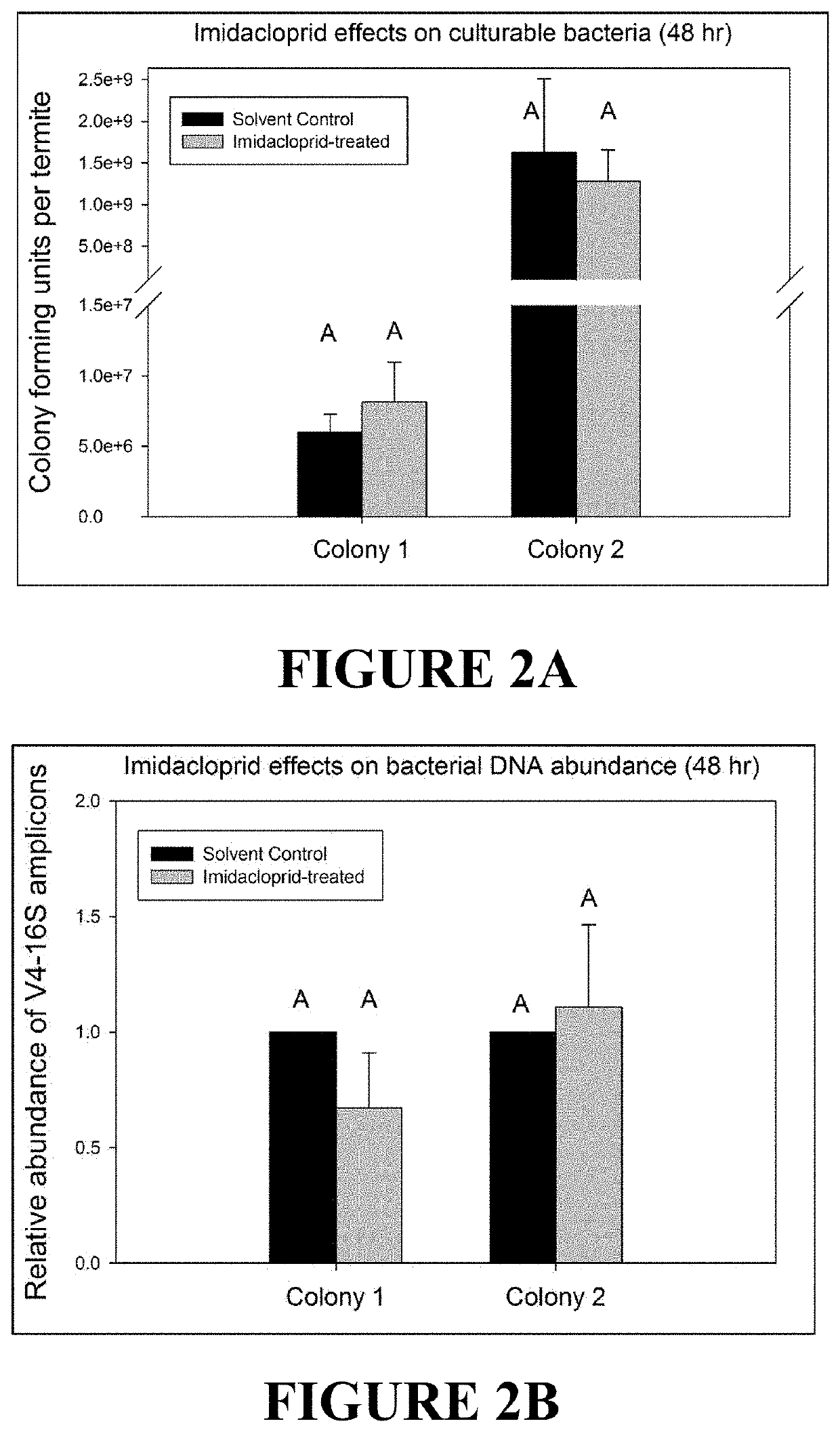Methods, compositions, and molecular targets that exploit synergies and symbioses in the termite gut
a technology of symbiosis and symbiosis, which is applied in the field of methods, compositions, and molecular targets that exploit synergies and symbioses in the gut of termites, can solve the problems that soil insecticides such as nicotinoids can have deleterious effects on non-target species, in particular honey bees, and achieve the effects of increasing the susceptibility of termites, promoting symbion
- Summary
- Abstract
- Description
- Claims
- Application Information
AI Technical Summary
Benefits of technology
Problems solved by technology
Method used
Image
Examples
Embodiment Construction
[0054]The disclosure of the present application provides molecular-level insight into the mechanisms of general pathogen defense and nicotinoid-pathogen synergy as applied to social insect colonies. Perhaps more specifically, the present disclosure provides novel treatment compositions and methods that exploit the newly discovered mechanistic underpinnings of nicotinoid-pathogen synergy including, without limitation, compromising social behaviors of the targeted insects and reducing protist symbiont populations present within the insects' hind gut.
[0055]For the purposes of promoting an understanding of the principles of the present disclosure, reference will now be made to several experimental studies and the results thereof illustrated in the figures and specific language will be used to describe the same. It will nevertheless be understood that no limitation of the scope of the present disclosure is intended by the description of these studies and / or results. Indeed, the materials...
PUM
| Property | Measurement | Unit |
|---|---|---|
| RH | aaaaa | aaaaa |
| outer diameter | aaaaa | aaaaa |
| outer diameter | aaaaa | aaaaa |
Abstract
Description
Claims
Application Information
 Login to View More
Login to View More - R&D
- Intellectual Property
- Life Sciences
- Materials
- Tech Scout
- Unparalleled Data Quality
- Higher Quality Content
- 60% Fewer Hallucinations
Browse by: Latest US Patents, China's latest patents, Technical Efficacy Thesaurus, Application Domain, Technology Topic, Popular Technical Reports.
© 2025 PatSnap. All rights reserved.Legal|Privacy policy|Modern Slavery Act Transparency Statement|Sitemap|About US| Contact US: help@patsnap.com



